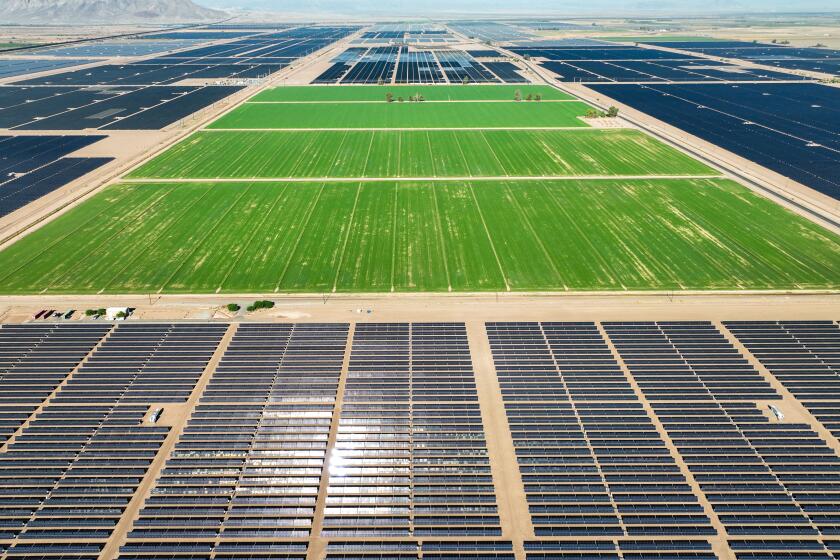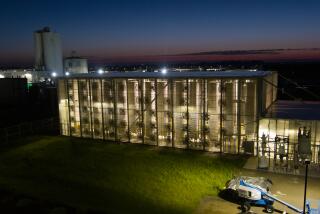Carbon removal efforts not moving fast enough to reach climate goals, study shows

- Share via
BERLIN — Researchers say efforts to remove carbon dioxide from the atmosphere aren’t being scaled up fast enough and can’t be relied on to meet crucial climate goals.
A report published Thursday by scientists in Europe and the United States found that new methods of removal currently account for only 0.1% of the
2 billion metric tons sucked from the atmosphere each year. That compares with roughly 37 billion tons of annual emissions.
Most current greenhouse gas removal is achieved by planting trees and managing forests and other natural carbon sinks, which themselves are under considerable threat.
New carbon removal technologies include so-called direct air capture, in which carbon dioxide is sucked from the atmosphere and stored underground. Another method, known as biochar, involves burning plant matter and then burying the carbon-heavy waste.
Both have been heavily criticized by environmentalists even as they attract considerable funding from governments and companies seeking solutions to the climate crisis. Developing countries argue that their contribution to global carbon removal — mostly in the form of forests and land management — are equally important and deserve greater recognition.
Solar panels, wind turbines and electric cars are not enough to beat climate change. California is also looking at giant carbon-sucking vacuums.
The study concludes that novel carbon removal needs to increase thirtyfold by 2030 to achieve the emissions reductions required to keep global temperature rise below 3.6 degrees Fahrenheit and ideally no more than 2.7 degrees by the end of the century.
Achieving “net zero” emissions by midcentury — a goal many countries are aiming for and experts say is necessary to meet the targets agreed in the 2015 Paris climate accord — would require an increase in carbon dioxide removal by a factor of 1,300, and few countries have realistic plans for doing so, the authors said.
Toward a more sustainable California
Get Boiling Point, our newsletter exploring climate change, energy and the environment, and become part of the conversation — and the solution.
You may occasionally receive promotional content from the Los Angeles Times.
“We are really lagging behind significantly when it comes to carbon removal,” said study co-author Jan Minx of the Berlin-based Mercator Research Institute on Global Commons and Climate Change.
“If we want a robust strategy to achieve the Paris climate goals, then we need to restrict dependence on carbon removal ... through rapid and far-reaching emissions reductions,” he said. “But at the same time the expansion and development of carbon removal methods needs to be boosted.”
Oliver Geden of the German Institute for International and Security Affairs, who also contributed to the report, said natural means of carbon removal, such as reforestation, are currently more cost effective than artificial methods. But there are limits to how much land can be devoted to forests, and rising global temperatures increase the risk that carbon stored that way could be released again, such as through wildfires.
He noted the rapid rise of solar and wind power plants as examples for how new technologies could have a measurable impact on curbing climate change.
The authors of the study say they plan to regularly publish a “State of Carbon Dioxide Removal” report.
Replacing agriculture with solar panels could help solve the West’s energy and water crises. But farmers are fighting back.
More to Read
Sign up for Essential California
The most important California stories and recommendations in your inbox every morning.
You may occasionally receive promotional content from the Los Angeles Times.











